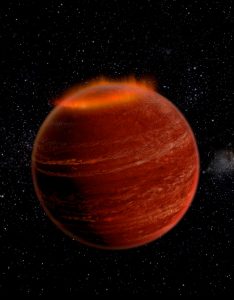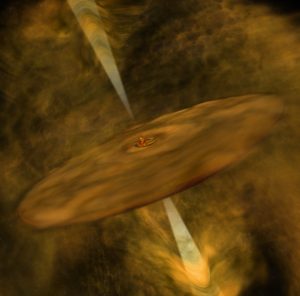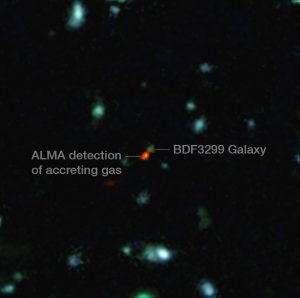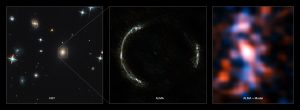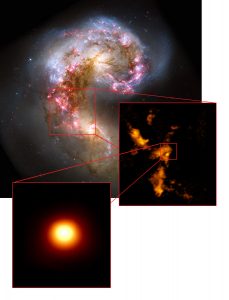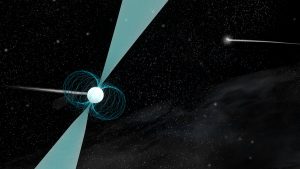Astronomers have discovered the first aurora ever seen in an object beyond our Solar System. The aurora, similar to the famous “Northern Lights” on Earth, is 10,000 times more powerful than any previously seen.
Brown Dwarfs, Stars Share Formation Process, New Study Indicates
Astronomers using the Very Large Array have discovered jets of material ejected by still-forming young brown dwarfs.
ALMA Detects Star-Forming Clouds in Normal Galaxy in Early Universe
Astronomers using ALMA detected the most distance star-forming clouds in normal galaxies in the early Universe.
Astronomers ‘Unscramble’ Einstein Ring to Reveal Star Formation in the Distant Universe
ALMA’s Long Baseline Campaign reveals hidden views of lensed galaxy SDP.81.
Proto Super Star Cluster
ALMA finds first example ever of globular cluster about to be born.
Pulsar with Widest Orbit Ever Detected
Students using the GBT discover pulsar with amazingly wide orbit around neutron star.






